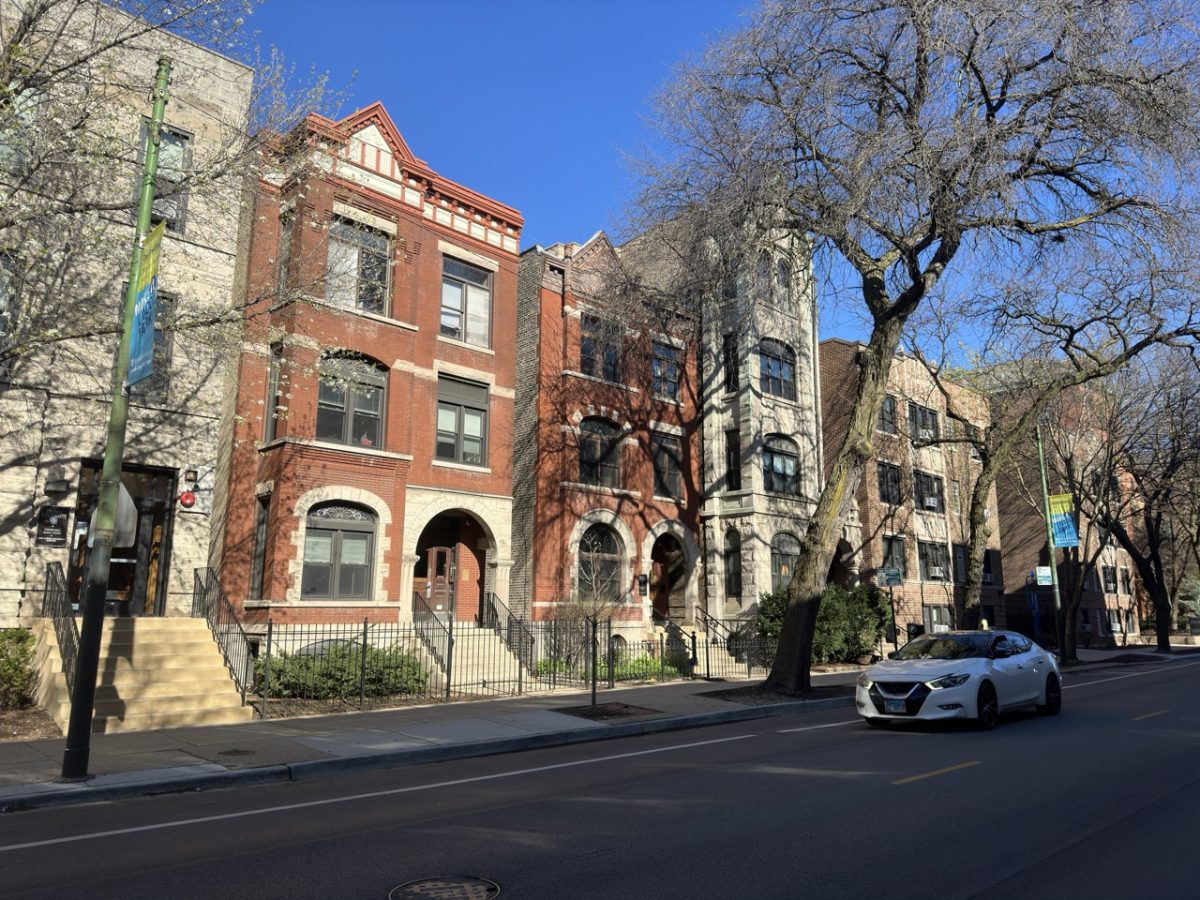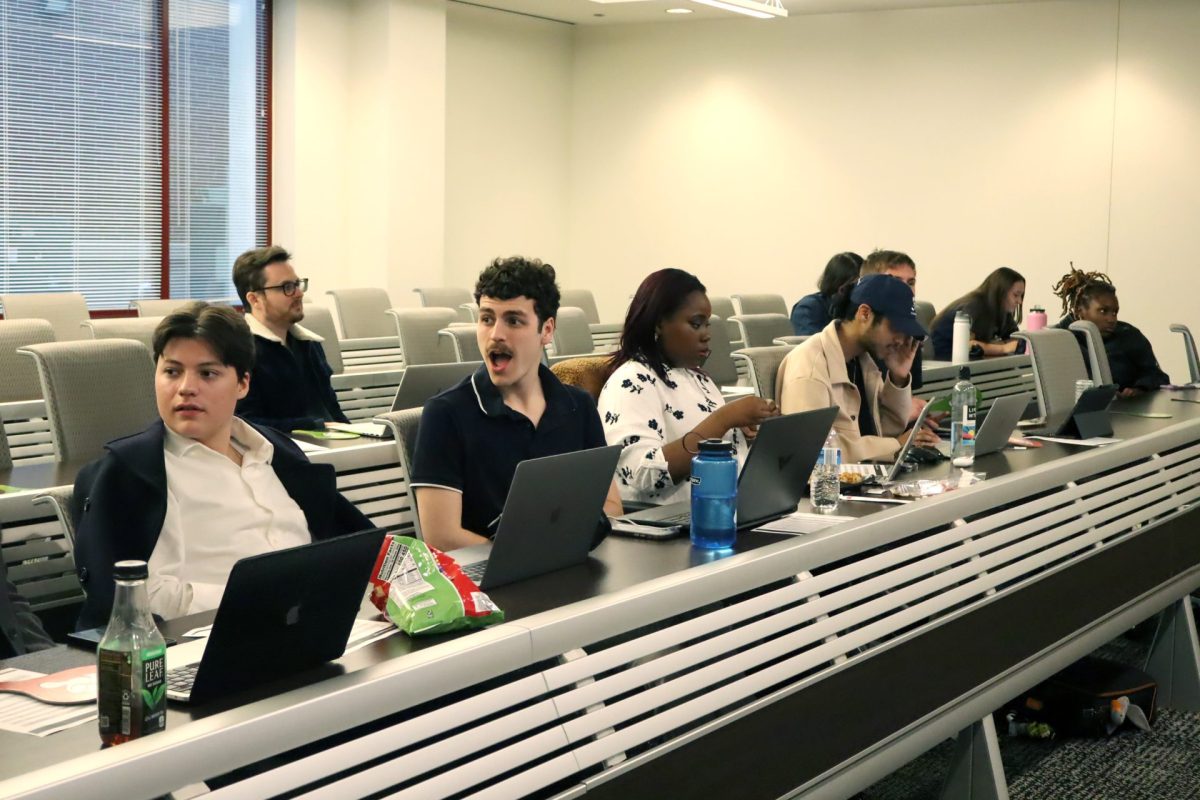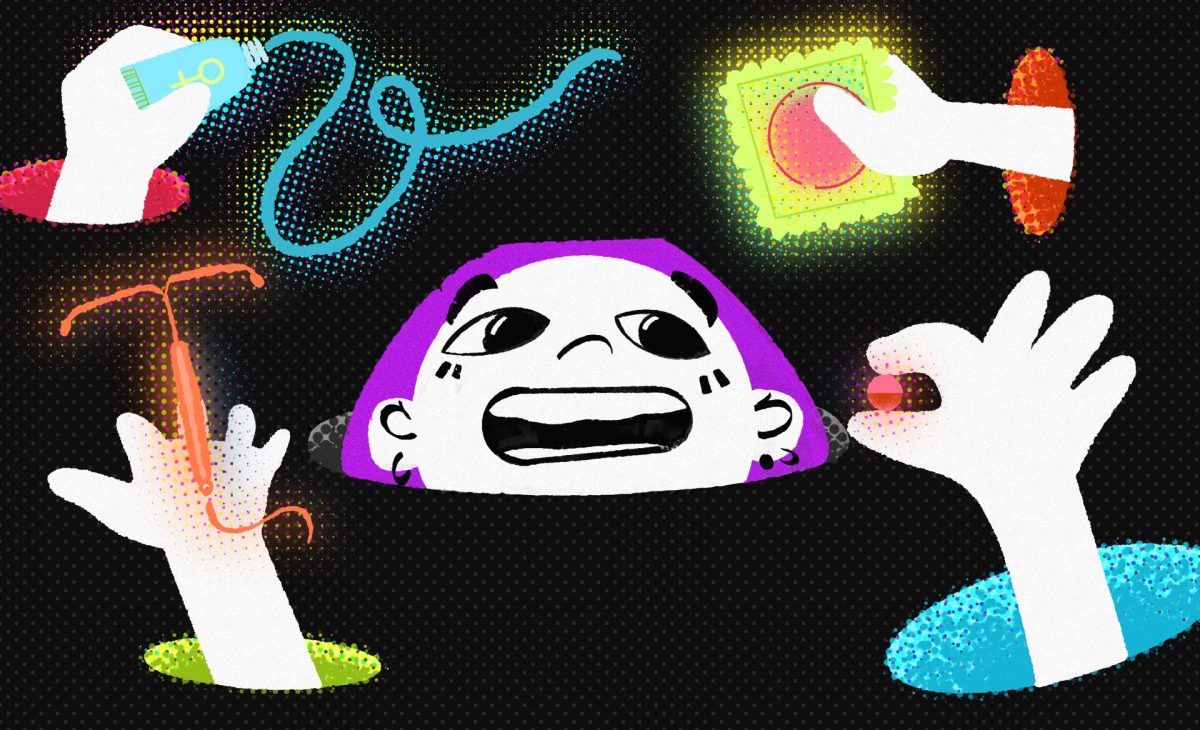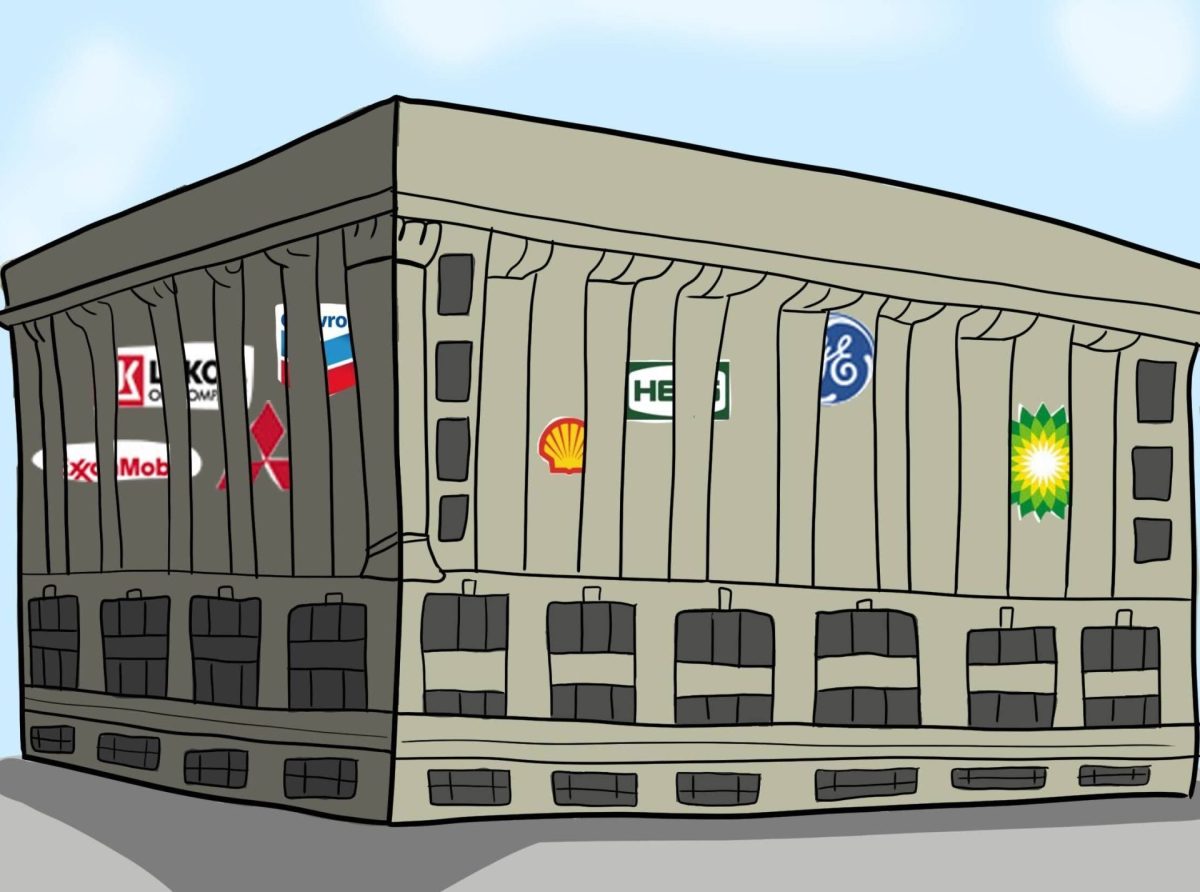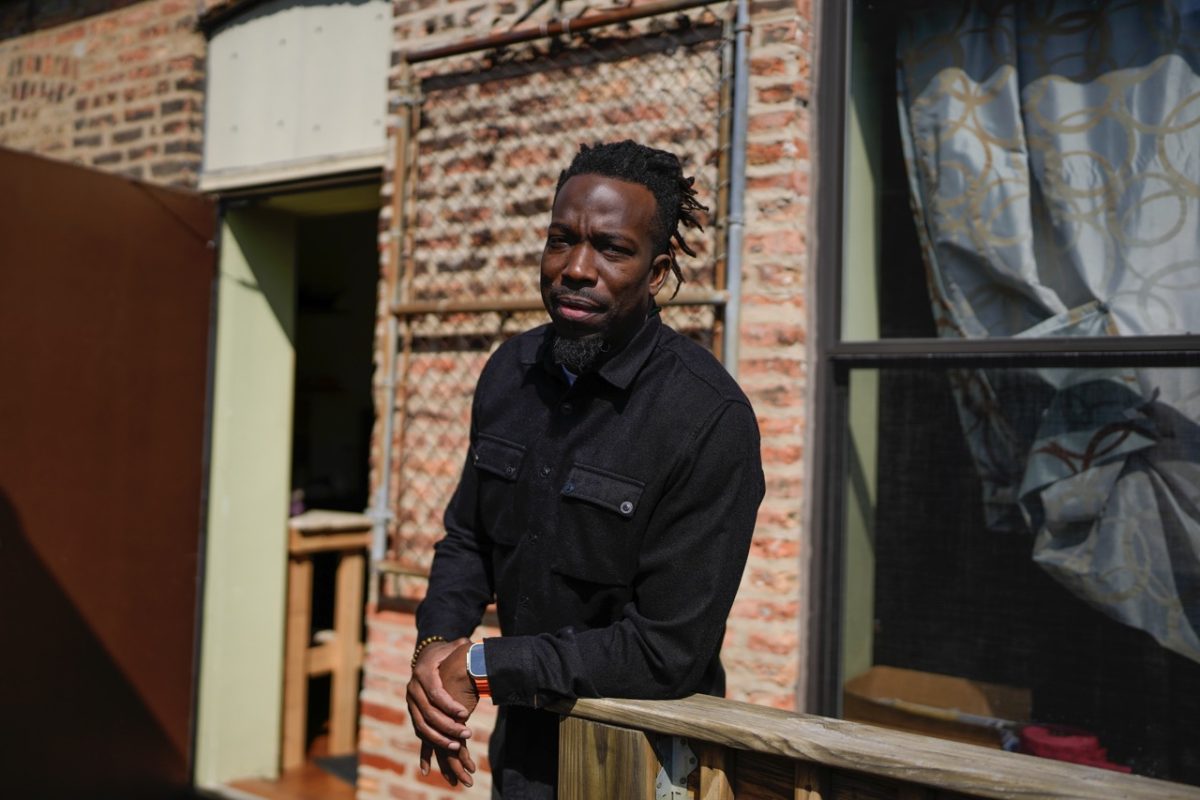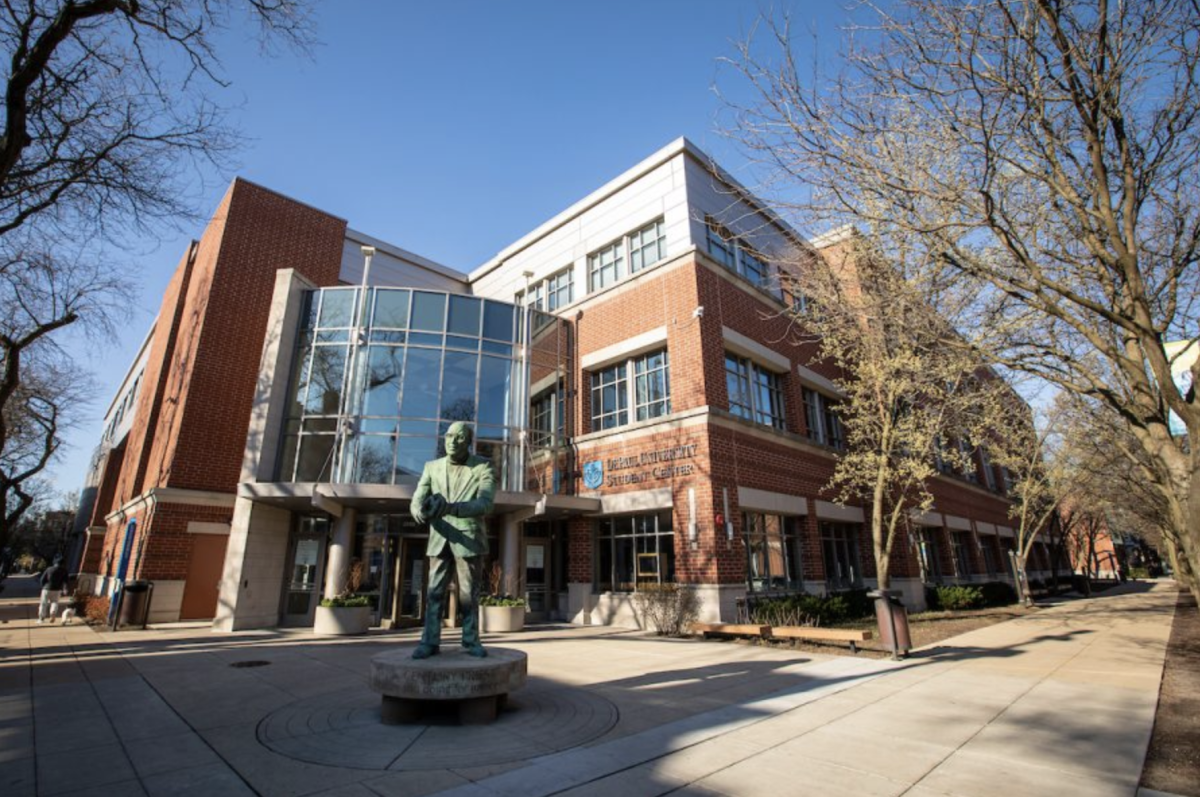
Angelo Rivera’s mom lived with lung cancer for half of her life before dying at the age of 49. He keeps her in mind each year as he uses DePaul’s DemonTHON as an opportunity to donate what he can’t otherwise donate financially.
“It just blew my mind,” Rivera recalled, thinking back to when he first heard of DemonTHON three years ago. “I was immediately like, ‘This is what I want to do, I want to help them in any way that I can.’ I don’t have much to give myself personally, but I figure my time is more valuable than anything and I chose to give my time.”
And in a 24 hour dance marathon, there’s plenty of potential to do so.
Rivera is the only groundsman at DePaul who stays until six in the morning and comes back at 2 p.m. to help with DemonTHON, eight hours of which he isn’t actually “working.”
“When we first started DemonTHON the opportunity to volunteer our time was offered to us and by the third year I had my mind set, I said ‘I need to work this; I’m ready to volunteer. I need to be there for these kids.’”
“Being there” includes anything from sweeping the floor, laying down the plastic cover that was atop it, acting as a security guard, bringing kids beverages or food, and making sure the bathrooms are in order and stocked.
Efforts like these are in part what make DePaul’s 24-hour dance-athon 17th out of 270 in the nation this year and last. With a total of $214,050.46 raised this year, dancers and groundsmen like Rivera left the floor with sweat and tears, relief and excitement, and a sense of accomplishment and determination.
“I have mixed emotions right now,” dancer Colleen McLaughlin said through a tear-soaked smile. “I’m so excited—I did this last year and to see that it went over $150,000 is unbelievable and I cannot wait for next year to break another record.”
As the amount of money to be donated continued to rise on the projection that back-dropped the stage in the last ten minutes of a full 24-hours, DemonTHON committee members joined on stage in order to lead dancers in the “morale dance” that they all stumbled to learn in the first hour, but which they performed almost entirely in-sync during the last.
The rising number would cause cheers and applause every time it hit another ten thousand dollars, but when it rolled past last year’s amount of $150,000, the crowd shrieked as their adrenaline rose with it.
Committee and board members would not see the dollar amount until the total was completely calculated, but Technology Director Peter Sheff knew in advance.
“This is crazy. I knew about 15 minutes before the end,” he said, still shaking from the rush. “It was nerve-racking towards the end and incredibly stressful, but I’m just glad we were able to do it,” he said.
When that last dollar rolled across the one’s place, Blaire Janis, executive director and co-founder of DemonTHON, burst into unavoidable tears.
“Regardless of the number—and it’s pretty astounding to me—you leave this experience when the ugly cry happens. We call it ugly crying because you can’t avoid it and no one looks good, but it happens because you know you have absolutely nothing left—physically, mentally or emotionally.”
After a year of planning, fundraising, organizing and promotion, committee and board members collapsed into each other in the middle of a stage, a hug to join in an “ugly cry” amidst congratulating each other for all of the hard work that all participants at DemonTHON appreciate.
“The fact that we’re number 17th in the nation now for dance marathon after our third year is just incredible,” Emma Kolander, morale captain in charge of boosting energy and uplifting dancers, said. “I have so much respect and admiration for Blaire and David and Sam . . . They make this happen.”
With co-founders Jason Knoespel and Raissa Correa, Blair Janis helped start DemonTHON in 2011 after recognizing a gap between treatment and funds for families at Ann & Robert H. Lurie’s Children’s Hospital of Chicago. Proceeds go towards equipment for treatment and/ or for patient comfort, and to families who might not receive care otherwise.

“Our community saw a need for the ‘What must be done?’ question to be asked. It happened to be in the form of kids in Chicago having a need for uncompensated care to be taken care of for our kids who wouldn’t normally receive treatment, or for research with the greatest need, or kids who absolutely will never be turned away from the hospital for their inability to pay,” Janis recalled. “It seemed almost kind of odd to us the first year and a half or so that this had never happened before.”
For ‘Miracle Families’ such as the Gurevitz family (Lisa, Dan, Rachel and Mia) DemonTHON came just in time.
“Mia was diagnosed with a brain tumor when she was 2 years old in November of 2011 and its in-operable— right now the only treatment option is chemo therapy, so she’s basically been on chemo therapy since 2011,” Mia’s mom, Lisa Gurevitz, said. “She’s been living with cancer more than half of her life at this point.”
Mia is four and half now, but due to the location of her tumor, she does not grow at a typical rate. She’s attended DemonTHON for the past two years now, and shares her story on stage as inspiration to dancers and donors alike. As her parents try their best to normalize Mia’s childhood through summer camps, extra-curricular activities such as ballet and their large support system of friends and family, Mia inevitably deals with hardships that most four year olds couldn’t even fathom. “She doesn’t do the things that normal 4 years old would do,” Dan Gurevitz, Mia’s father, said. “She has issues with eating, she has issues with anxiety, she has issues with nausea and vomiting, and so it’s dealing with those types of things every day. You have some sort of manifestation of one of those things and it has to be dealt with at school and at home and everywhere.” It’s events such as DemonTHON, though, where Mia and kids of all ages get to be superstars rather than patients.
“It’s a safe space for them where they can be who they are because they know that no one is going to poke or prod or ask them anything about their medical condition that they wouldn’t want to offer up already,” Janis said.
It’s these kid-friendly aspects of DemonTHON, Lisa said, that will bring them back to DemonTHON “as long as DemonTHON have [them].”
“The thing about DemonTHON or other dances marathons for us is that it’s for the kids—not just the patient, but the siblings too. Rachel runs around with the other siblings and it’s good for her to relate to other siblings that are going through it,” she said. “They feel like stars—all of the dancers want to take pictures with them and dance with them and really bring them into it. Anything that benefits a hospital is special and amazing, but there’s something unique about the dance marathon experience that brings the family together.”
Despite Mia’s unconventional routine, Alpha Phi member Elizabeth Hoffman, a member of the sorority that has been matched up to sponsor the Gurevitz family for two years now, said she is anything but a “sassy, yet sweet, little girl.” Alpha Phi has worked with Mia and her family for each year they’ve attended DemonTHON and Skype chats with them every so often in between.
Connections like these will bring Janis back for years to come.
“I’ll continue to be with [the families] and regardless,” she said. “Whatever happens after graduation, to know that these families are here and that these families are still going to be down at the hospital and still need to run for a coffee break— we’ll be the ones there to come and hangout with the kids in the playroom so that mom and dad can take a break.”
Even though she’s graduating, the work is not done yet. The day after DemonTHON is when all attendees receive thank-you emails, with an attached application to be on the board next year. Wednesday is when they will select their new management. After that, the planning begins.
“It’s more than just like the 24 hours; we’re a year-long fundraising organization and it just culminates in this huge celebration today,” Janis said.
“But that doesn’t mean that every single day year-long kids aren’t in the hospital, or in an outpatient center, or that our community isn’t meeting five and six times a week sometimes doing everything they can make sure that our year is as successful as possible.”
With games, costumes, refreshments, food, face paintings, light sticks and music, a celebration it is. The fun doesn’t end as the clock strikes five, though.
“I’m going to SIT DOWN!” attendee Kolander shouted. “Right after I clean up.”
Dancers and committee members transferred their energy from dancing to clean-up almost immediately after their last “Circle of Hope” dance in the middle of the gymnasium. In a matter of three extra hours, the gym was nearly back to its original McGrath basketball purpose.
Rivera perhaps sums this collective effort up best:
“We all have to pull together as a family. Without the world pulling together as a family, we would be nothing. It’s all of our responsibility to take care of each other, regardless if you’re sick, healthy, rich or poor. For
these students to step up to the plate as a young group shows a lot for what the world has to offer from our future generation.”


